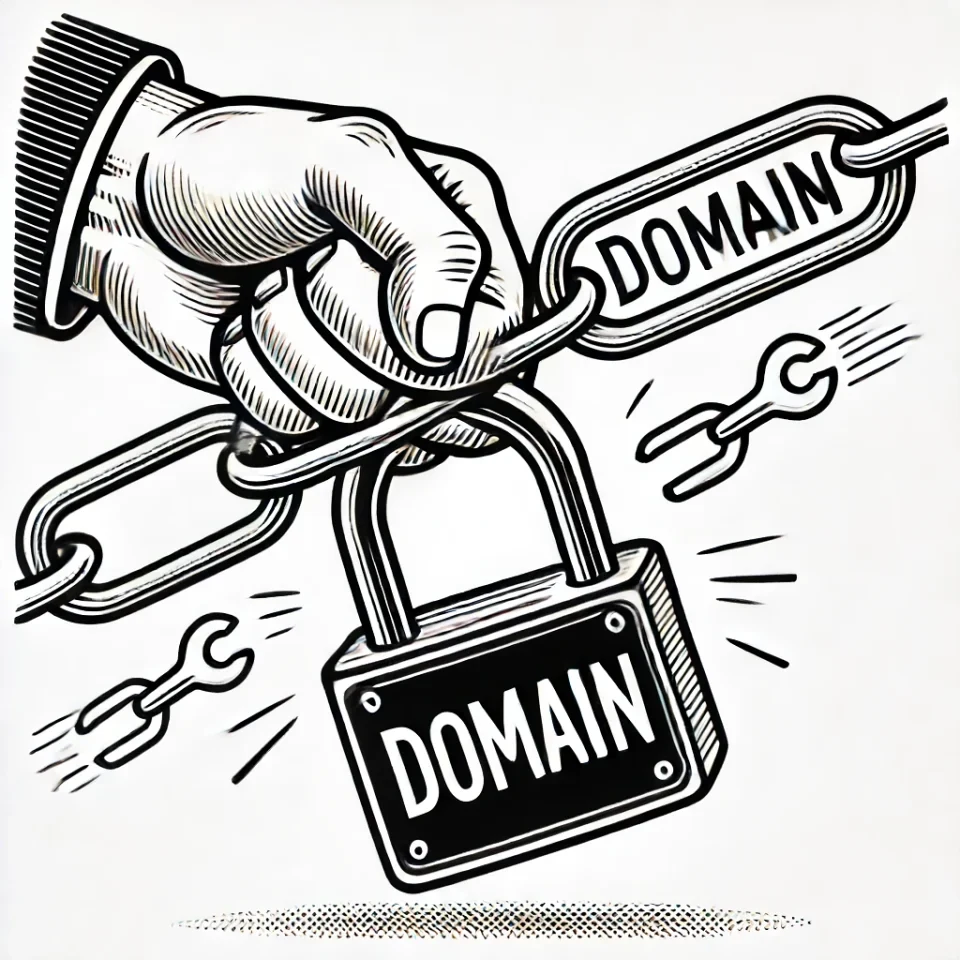Is your website a critical component of your marketing, sales, and digital customer experience? If so, domain hijacking can put your business at severe risk. This dangerous activity disrupts your business-as-usual (BAU) operations, damages brand reputation, and wipes out customer trust.
A striking example is Google.com, which was hijacked after failure to renew and had to pay the ex employee an amount to get the domain back. Another example is Perl.com, which was hijacked and associated with malware campaigns in September 2020. Shortly after the breach, the domain was listed for sale for $190k.
Wondering how your domain can be hijacked despite robust security measures? Well, malicious actors can slip through various cracks in your domain security by leveraging different types of domain hijacking, which often go unnoticed.
We’ve thus curated this guide on domain hijacking attacks, the urgent need to prevent domain hijacking, and the most common types of domain hijacking. We’ve also discussed the top ways to prevent domain hijacking attack(s). Let’s get started!
What is Domain Hijacking?
Domain hijacking is when malicious actors make unauthorised and unprecedented changes to domain name registry or domain registration and capture Domain Name System (DNS) configuration without consent. Hijackers then seize the domain to carry out various malicious activities, holding the domain for ransom, including installing malware, spamming visitors, and redirecting traffic to a fraudulent website to steal sensitive data.
Domain hijacking attacks often occur due to improper security with domain registrars, non-compliance with the domain transfer policies, and unsatisfactory domain name administration like failure to renew a domain on time.
Why is it Important to Prevent Domain Hijacking?
Websites have evolved into core operational and identity centers for businesses, making it increasingly crucial to safeguard your domains from hijackers. Let's explore the reasons why this should be your priority -
- Hijacked domains cause service disruptions and interruptions in business operations, particularly for eCommerce or SaaS businesses.
- As a domain registrant or domain owner, you are held accountable for activities conducted under your hijacked domain, regardless of whether they are carried out by domain hijackers, resulting in a damaged brand reputation.
- Hijackers often engage in activities that violate the Digital Personal Data Protection Act, which may lead to monetary and legal penalties.
- During domain hijacking, hackers may install malware on your website visitors’ PCs or redirect them to a fake website designed to collect confidential information, destroying customer trust and confidence in your business.
5 Types of Domain Hijacking
Domain hijacking capitalizes on the existing vulnerabilities of your domain and employs various techniques to achieve this; here are the most common ones:
1. DNS Hijacking

Domain Name Server (DNS) hijacking occurs when a hacker gains control of your DNS and modifies the DNS records to point the website to their own servers. This manipulation leads to incorrect DNS query resolutions, redirecting users to malicious websites. Upon successful domain hijacking, the malicious actors can phish your customers for data, get them to install malware, or steal credit card information.
Methods of DNS hijacking
- Rogue DNS server - hijackers attack DNS servers and alter DNS records, redirecting DNS requests to fake websites.
- Man-in-the-middle (MITM) - DNS attack that intercepts user-DNS server communication, diverting the user to fake sites.
- DNS cache poisoning - hackers inject incorrect data into caching servers, providing users with inaccurate IP addresses and redirecting them to fake websites.
How to prevent DNS hijacking?
- Choose reliable and secure DNS hosting providers.
- Restrict access to the domain’s DNS settings via multi-factor authorization, firewall, and network security measures.
- Keep your DNS software updated to stay ahead of known vulnerabilities.
- Monitor DNS traffic for anomalies.
- Implement DNSSEC (Domain Name System Security Extensions) for additional security.
- Randomize query IDs, use random server source ports, and include both uppercase and lowercase in your website domain name to stay safe from cache poisoning.
2. Phishing

Phishing is a widespread cybersecurity threat; in fact, 90% of companies faced phishing in 2019.
Here, we’re referring to phishing as a cyberattack wherein the hijacker impersonates a trusted source, often via deceptive messages, websites, or emails, to trick those with domain hosting access into revealing sensitive information or installing malware.
Hijackers could then use these credentials to compromise domain settings, lock out the original domain owner, or perform other malicious activities.
Methods of phishing
- Email phishing - hijackers send malicious emails or links to fake websites, mimicking the domain registrar login page to acquire confidential information, including registrar account credentials and personally identifiable information (PII).
- Spear phishing - a specialized form of email phishing tailored to specific individuals or groups. These emails are highly personalized, making them an even greater security threat.
How to prevent phishing?
- Enable two-factor authentication to add extra layers of verification for domain management accounts.
- Follow best practices for strong passwords, including a strong length with a mix of uppercase, lowercase, and special characters, avoid easily guessable combinations, and update passwords regularly.
- Leverage domain locking services that most registrars provide to prevent unauthorized transfers or changes to domain settings.
3. Social Engineering

Social engineering employs psychological manipulation to deceive individuals into granting domain-setting access. This is done to take over and make unauthorized changes to the domain. Hijackers often impersonate trusted entities, such as domain registrar support staff or service providers, to send urgency or fear-triggering emails and fraudulently acquire login credentials.
You’ll be shocked to note that 90% of data breaches involve social engineering.
Methods of social engineering
- Baiting - attackers offer an enticing or profitable service or a tool in exchange for domain login information.
- Tailgating - hackers gain unauthorized access to the domain by exploiting an authorized user’s credentials or other forms of access permissions.
- Pretexting - hijackers create a fabricated scenario (pretext), such as needing specific details to confirm identity, by impersonating a trusted entity. This is done to trick domain owners or administrative employees into sharing domain-related confidential information and conducting malpractices.
How to prevent social engineering?
- Train employees about the risks of social engineering and the best ways to recognize and respond to such texts or emails.
- Track and limit access to domain management tools while enabling high-level authentication measures for the staff.
- Adopt advanced and secure email and web gateways to scan and filter out malicious content, preventing employees from interacting with such elements.
4. Typosquatting

Typosquatting or URL hijacking is a kind of domain spoofing where hijackers register domain names closely similar to yours by making minor typographical errors (using misspelled words, for instance). This cybercrime profits from user confusion or mistakes when typing your website’s domain name.
If users accidentally visit a fake website designed for malicious purposes, they may encounter phishing pages, malware distribution, attempts to steal confidential information, and fraudulent content.
Methods of typosquatting
- Typos - hijackers create web addresses with misspelled versions of your brand name, exploiting users’ spelling errors or their unawareness of the correct spelling.
- Different domain extensions - hackers use your brand name with a unique extension. (Google[dot]org instead of Google[dot]com)
- Combosquatting - a part of domain spoofing that involves adding or removing a hyphen from your domain name to divert traffic to a fake website.
How to prevent typosquatting?
- Register your domain’s common typos and redirect them to your official website to prevent misuse.
- Leverage domain management services to receive alerts if someone registers a new, similar domain.
- Register your domain name as a trademark to achieve legal protection, reducing cybersquatting attempts.
5. Registrar Hijacking

Registrar hijacking is a significant type of domain hijacking where hijackers target your domain registrar’s account, which is responsible for managing your domain. They may attack by impersonating you in front of the registrar, presenting fake domain registration documents to initiate domain transfer, or hacking the domain registrar systems to transfer domain ownership.
Additionally, hackers may exploit security vulnerabilities in your registrar’s systems or compromise registrar employees’ accounts to fulfill their malicious intents.
Methods of registrar hijacking
- Social engineering tactics - hackers use bribes or phishing emails to manipulate relevant domain registry employees and gain access to the target domain control panel.
- Modifying domain settings - hijackers may strategically convince the domain registrar to make changes to your domain’s settings, facilitating the hijacking of your domain.
How to prevent registrar hijacking?
- Rely on a reputed domain registrar with strong security measures and a proven track record of safeguarding the domains, especially those accredited by the Internet Corporation for Assigned Names and Numbers (ICANN).
- Implement multiple domain security measures like domain transfer locks, strong registrar account passwords, multi-factor domain account login, and high email security (often used to reset passwords).
- Regularly monitor your domain settings to detect any unauthorized changes.
Wrapping Up: How Nametrust Can Help?

There are various types of domain hijacking, like typosquatting, phishing, and DNS hijacking. Now, keeping your domain safe from all of them is significant but challenging due to hijackers' widespread network and subtly strategic approach.
Your errors and omissions can be financially and reputationally disastrous for your business. As a corporate domain registrar, we are well-versed with best practices to protect your domain.
You can trust us to manage your domain portfolio, take action to reduce cybersquatting, and weave strategies to prevent brand abuse. Nametrust’s comprehensive feature stack includes change management, multi-user support, a dedicated account manager, and Single sign-on (SSO) that you can rely on for domain portfolio management.
Start protecting your domain from hijackers with Nametrust.





